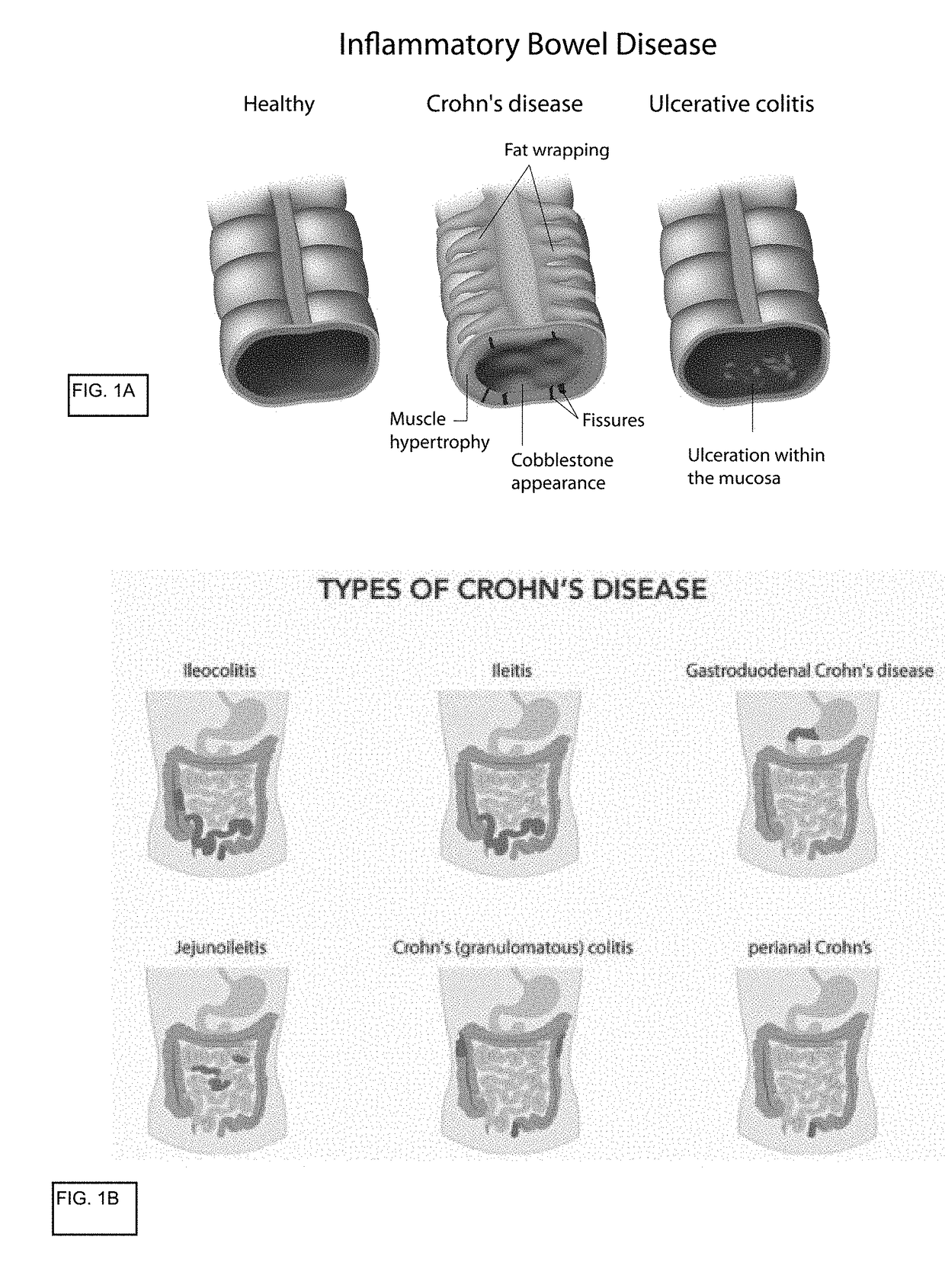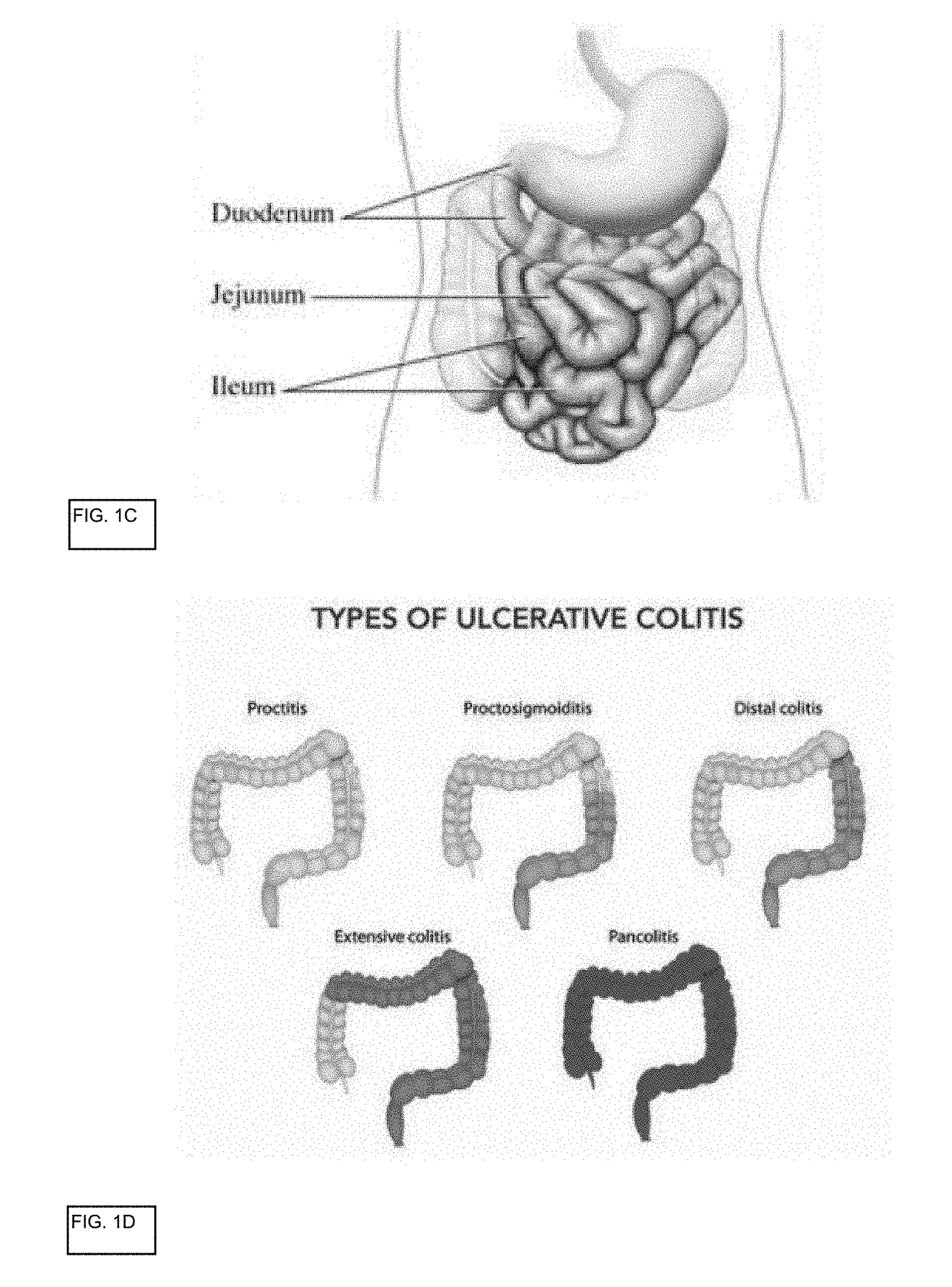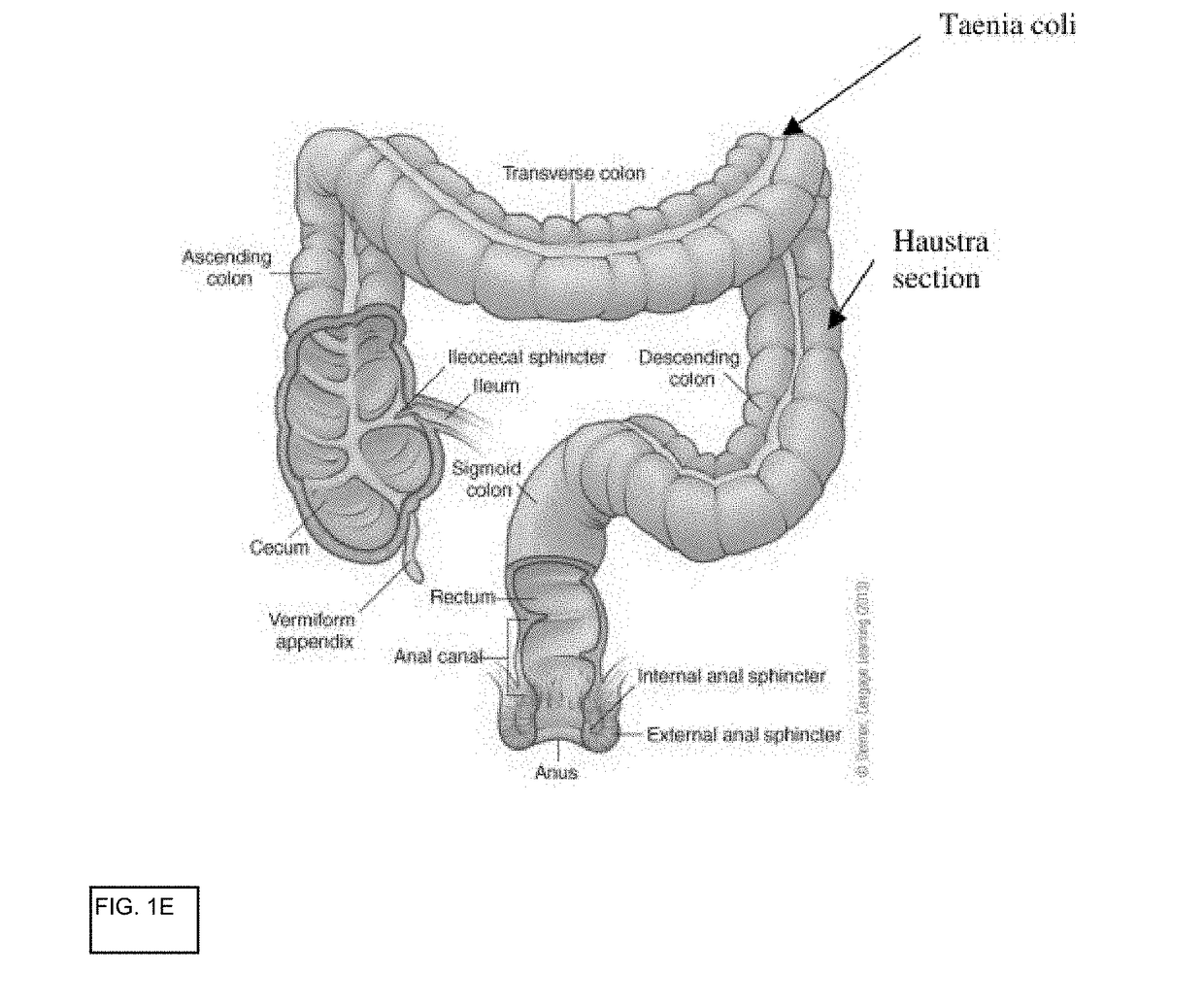In vitro gastrointestinal model comprising lamina propria-derived cells
a technology of lamina propria and gastrointestinal tract, which is applied in the field of in vitro microfluidic gutonchip, to achieve the effect of reducing inflammation
- Summary
- Abstract
- Description
- Claims
- Application Information
AI Technical Summary
Benefits of technology
Problems solved by technology
Method used
Image
Examples
example 1
Preparing a Gut-On-Chip
[0501]The following exemplary protocol outlines the sterilization / functionalization, coating, media wash, and cell seeding steps for preparing the Intestine-on-Chip with epithelial cells, e.g. Caco-2, human primary epithelial cells, etc., HUVECs, and resident immune cells from lamina propria derived cells.
[0502]The following exemplary equipment were used: 3×2.5 inches of tubing (1 / 32 inch ID Pharmed BPT) per chip; 2×10 mL syringes reservoirs per chip, cut at 4 mL line with plungers removed; 2×1 mL or 3 mL syringes; 2×18G straight connectors per chip; Steriflip filter 0.45 um (Fisher SEIM 003 M00); Tubing clamp, 2 per chip; Razor blade; 70% ethanol; 4×18G″ Blunt needles per chip (SM-infusion cat# B19-100); Emulate Chip Paddle; Chemxy Fusion 200 Syringe Pump with multi-channel extender; Hemocytometer; Microscope; Large, round Petri dishes; and Ice.
[0503]The following exemplary reagents were used: DMEM Hi Glucose (ThermoFisherSci 11965-118) without FBS (fetal bov...
example 2
One Embodiment of a Chip Culture Timeline and Example of a Gut-On-Chip
[0518]An exemplary experimental chip culture schedule is presented as a timeline starting from Day 0 (seeding chips) by adding HUVEC cells and lamina propria-derived cells; Day 1 was seeding a top layer of epithelial cells and connecting to a flow system; by Day 7 treatments, such as adding PAM2CSK4; and starting Day 8 testing layers and / or removing samples for further analysis. A sample such as effluent was tested for cytokine section from cells. Other samples removed were histological samples for fixation and ICC (immunocytochemistry) such as for determining cellular appearance, determination of tight junction integrity, such as by staining for actin, ZO-1, intracellular cytokine co-localization, etc, and physiological testing, such as migration of particles through the extracellular regions of the epidermal layer. Additional tests may include RNA isolation for determining gene expression levels, such as for pro...
example 3
Use of a Gut-On-Chip for Modeling Ulcerative Colitis (UC).
[0523]Resident immune cells (B cells, T cells, dendritic cells, macrophages, and innate lymphoid cells) were isolated from healthy and Ulcerative Colitis (UC) patients including inflamed and non-inflamed regions of patient tissue. These cells were used as lamina propria-derived resident immune cells in a Gut-On-Chip as described above.
[0524]A. UC Lamina Propria-Derived Cells Disrupt Epithelial Barrier Function.
[0525]Inflamed UC LP resident immune cells increases permeability of epithelial cells when co-cultured in a device of the present inventions.
[0526]FIG. 10 shows an exemplary disrupted barrier function of around 0.5×10-7 Papp (cm / s) (apparent permeability) by co-culturing caco-2 epithelial cells and HUVECs with leukocytes isolated from inflamed UC tissue. Untreated controls for comparison use healthy LP derived cells and no LP cells in Gut-On-Chips for comparisons. Treated samples used leukocytes isolated from non-inflam...
PUM
| Property | Measurement | Unit |
|---|---|---|
| porosity | aaaaa | aaaaa |
| porosity | aaaaa | aaaaa |
| porosity | aaaaa | aaaaa |
Abstract
Description
Claims
Application Information
 Login to View More
Login to View More - R&D
- Intellectual Property
- Life Sciences
- Materials
- Tech Scout
- Unparalleled Data Quality
- Higher Quality Content
- 60% Fewer Hallucinations
Browse by: Latest US Patents, China's latest patents, Technical Efficacy Thesaurus, Application Domain, Technology Topic, Popular Technical Reports.
© 2025 PatSnap. All rights reserved.Legal|Privacy policy|Modern Slavery Act Transparency Statement|Sitemap|About US| Contact US: help@patsnap.com



